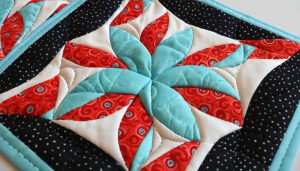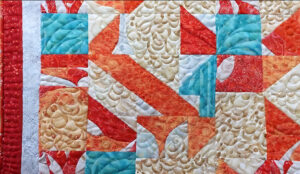Quilting stitches play a crucial role in creating the overall design and structure of a quilt. Different stitches serve various purposes, from securing layers to adding decorative elements. There are numerous quilting stitch patterns to choose from, ranging from traditional designs to more modern and creative options.
History of Quilting
The history of quilting stitches is deeply woven into the fabric of human culture, spanning centuries and continents. Quilting, the process of sewing together layers of fabric, dates back thousands of years, with evidence suggesting its presence in ancient civilizations such as Egypt and China. The art of quilting stitches became particularly prominent in medieval Europe, where it served both practical and decorative purposes.
In the 18th and 19th centuries, quilting gained momentum in America. Pioneer women created intricate quilt patterns, often utilizing stitches like the running stitch and the cross-stitch. Quilting stitches not only provided warmth but also became a means of storytelling, as quilted creations showcased the quilter’s life, values, and community.
As quilting evolved, various stitching techniques emerged. The 19th century saw the rise of crazy quilts, adorned with elaborate embroidery stitches. The late 20th century witnessed a quilting revival, with the art form gaining recognition as a legitimate form of artistic expression.
Today, the history of quilting stitches is alive in diverse styles. Traditional quilting stitches like the running stitch and crosshatch patterns coexist with modern techniques such as free-motion quilting. Quilters continue to innovate, pushing the boundaries of creativity and using stitches to weave together narratives of tradition, culture, and personal stories. The history of quilting stitches stands as a testament to the enduring artistry and cultural significance of this timeless craft.
Quilting Stitches – Patterns
Here are some popular quilting stitch patterns:
- Straight Line Quilting:
- Simple and classic, straight line quilting involves stitching parallel lines.
- Straight lines can be spaced closely for a dense quilted look or farther apart for a more open and airy feel.

- Grid Quilting:
- Similar to straight line quilting, grid quilting involves stitching a series of intersecting lines to create a grid pattern.
- The spacing of the lines can be adjusted to achieve different effects.

- Stippling or Meandering:
- A free-motion quilting pattern where the stitches create a random, curvy design.
- Stippling is often used for background quilting to provide texture without distracting from the main quilt design.

- Echo Quilting:
- Involves quilting lines that echo the shape of a block or motif in the quilt.
- Creates a shadow or outline effect that enhances the visual impact of the pieced or appliquéd design.

- Cathedral Windows:
- Mimics the appearance of traditional cathedral windows.
- Involves stitching curved lines in a circular or semi-circular pattern, often radiating from a central point.

- Feather Quilting:
- Elegant and intricate, feather quilting mimics the appearance of bird feathers.
- Requires skill in free-motion quilting to create flowing, feather-like shapes.

- Chevron Quilting:
- Creates a zigzag pattern resembling chevrons.
- Chevron quilting can be done with straight lines or by following the natural lines of the quilt.

- Pebble Quilting:
- Involves stitching small, round shapes closely together to create a pebble-like texture.
- Adds dimension and interest to the quilt surface.

- Swirls and Spirals:
- Quilting lines form swirling or spiral patterns.
- These patterns add movement and energy to the quilt and can be adapted for both modern and traditional designs.

- Crosshatch Quilting:
- Creates a pattern of intersecting diagonal lines.
- Crosshatch quilting can be done at various angles, providing a classic and timeless look.

- Woodgrain Quilting:
- Mimics the appearance of wood grain with wavy and irregular lines.
- Often used for landscape or nature-themed quilts.

- Trapunto Quilting:
- Involves adding extra batting to specific areas of the quilt to create raised, three-dimensional effects.
- Adds depth and texture to certain elements of the quilt.

- Free-Motion Echo Quilting:
- Similar to echo quilting but done in a free-motion style.
- Allows for more creative and irregular spacing between the echoed lines.

- Continuous Curve Quilting:
- Consists of quilting lines that follow curved paths without intersecting.
- Creates a smooth and flowing look, often used in borders and sashing.
Quilters often choose stitch patterns based on the design of the quilt, personal preferences, and the level of quilting expertise. Experimenting with different patterns can lead to unique and beautiful results.














